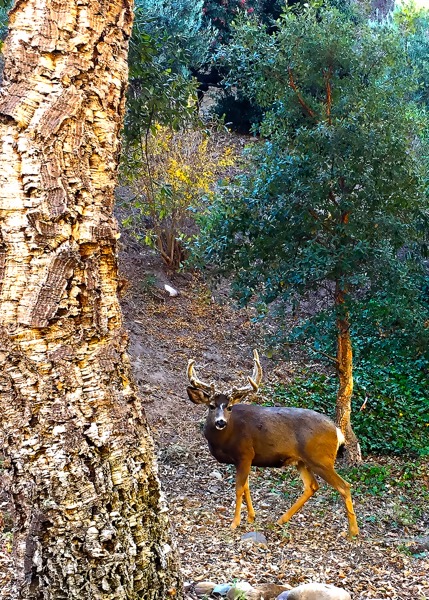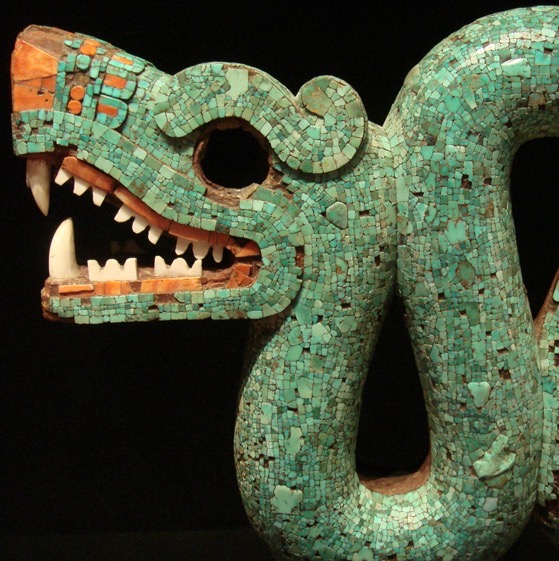From The Collection Of… is a new series highlighting the amazing artwork of the world that is discoverable — and shareable — on the Internet. Most museum collections contain far too many pieces to exhibit in their galleries, so locating these images online may be one of the only ways of enjoying them. Over the next year or so, I will be sharing my favorites from collections large and small, far and wide. Follow My Word now to enjoy this journey through the — often hidden away — world of art.
Pectoral, in the form of a double-headed serpent. Made of cedro wood (Cedrela odorata) and covered with mosaic made of turquoise and red thorny oyster shell (Spondylus princeps). The teeth in the two open mouths are made from conch shell (Strombus). Two resins are used as adhesive: pine resin and Bursera resin (copal). In the mouths the resin is coloured red with hematite. Beeswax adhesive survives around the eye sockets.
Curator’s comments Vila Llonch, in McEwan 2009, Cat. 104, p239
“The Nahuatl term ‘coatl’ can be translated as both serpent and twin. The Mexica considered serpents to be powerful, multifaceted creatures that could bridge the spheres (the underworld, water and sky) owing to their physical and mythical characterisitics.
Serpents were also associated with fertility and with water, owing to the undulating movement of their bodies. In Mexica iconography turquoise serpents (xiuhcoatl) are related to celestial events. On the Mexica Calendar Stone, two xiucoatl accompany the sun on its daily journey across the sky.
Double-headed serpents (maquizcoatl) were considered to be the bearers of bad omens and were associated with elite figures. The Mexica believed that anyone finding one in their path should place it on their arm. If the serpent could not be moved it meant that death was approaching. Maquizcoatl was one of the names given to the supreme Mexica god Huitzilopochtli. It is therefore no coincidence that four double-headed serpents, worn as bracelets and anklets in the monumental sculpture of his vanquished sister Coyolxauhqui, excavated at the Templo Mayor.
This double-headed serpent is carved from a single piece of Spanish cedarwood (Cedrela odorata). The front of the serpent and the two heads are covered with turquoise mosaic, and the hollowed-out reverse of the body was originally gilded. The open jaws have menacing fangs made of Strombus shells, with gums and nostrils depicted using fragments of the red thorny oyster (Spondylus princeps).
Both snouts are decorated with representations of feathers and a double band of turquoise and shell discs on a black background. The decoration is similar to that which appears on numerous sacrificial vessels or cuauhxicalli, perhaps linking the morbid connotations of this magical animal to the destinity of its victims. The heads may originally have featured inlaid eyes made from pyrite or obsidian, and flickering tongues might have been attached to the holes in the centre of the lower jaws to create the impression of a living creature.
The two holes at the top indicate that this double-headed serpent may have been worn on the chest as a pectoral. Similar large zoomorphic effigies worn in this way are illustrated in fol. 72 of the Codex Magliabechiano depicting the earth goddess Cihuacoatl, and in fols. 9, 10 and 34 of the Codex Borbonicus. This maquizcoatl might therefore have been an insignia worn or held by an effigy of Huitzilopochtli or one of his impersonators.”



